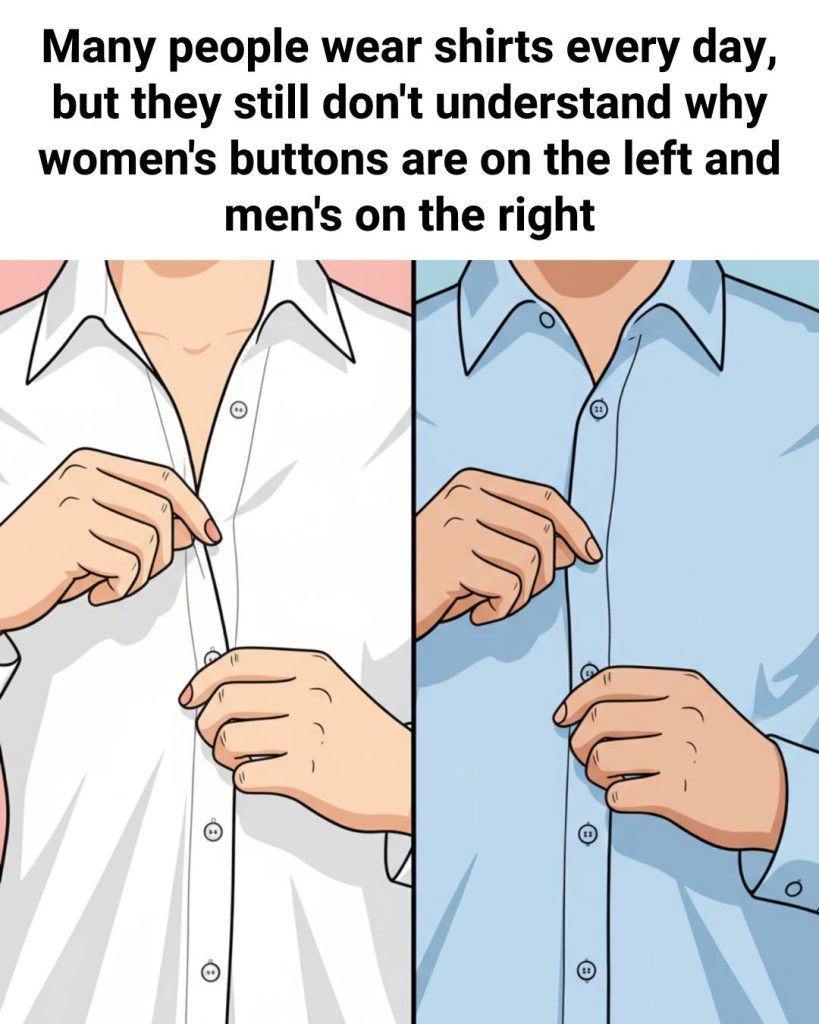If you’ve ever shared a closet with your partner, you may have noticed a small but curious detail: women’s shirts button on the left, while men’s button on the right. It’s a difference so subtle that most people never question it—but behind this seemingly trivial design lies a fascinating story of history, class, and culture.

The Practical Origins
The origins of this divide trace back to the 18th and 19th centuries, when clothing design reflected not just personal style but also social standing. Wealthy women rarely dressed themselves; instead, they had maids or attendants to assist them. Since most maids were right-handed, it was easier for them to button garments placed on the left side—convenient for the dresser, not the wearer.
In other words, the left-sided buttons on women’s clothing were designed for the people serving them. What began as a practical adaptation soon became a standard of women’s fashion, passed down through generations.
A Symbol of Status and Femininity
Having someone dress you was once an unmistakable sign of privilege. Only the upper classes could afford such luxury, and so the left-buttoned blouse became an unspoken emblem of refinement and wealth.
During the Victorian era, fashion wasn’t merely about aesthetics—it reflected cultural ideals. Women’s clothing, delicate and elaborate, emphasized grace and dependence. Left-sided buttons subtly reinforced this symbolism, setting women’s attire apart from the straightforward, functional garments of men.

The Men’s Side: Function Over Fashion
Men’s clothing developed along a different path—one shaped by practicality and warfare. Most men were right-handed, and in times when carrying swords or firearms was common, having buttons on the right allowed quicker access. They could unbutton a coat with the right hand while keeping the left free to draw a weapon.
This small design choice proved so efficient that it was carried from the battlefield to the wardrobe, becoming a defining feature of men’s tailoring. Over centuries, it evolved into a silent visual cue separating “his” from “hers.”
From Necessity to Tradition
As societies modernized, the reasons behind these designs faded. Women began dressing themselves, and men no longer carried swords—but the button divide remained. By then, it had become part of fashion’s DNA, too ingrained to change.
Designers continued the tradition, not out of practicality, but as a nod to heritage—a tiny reminder of how deeply history is stitched into the fabric of daily life.

What It Means Today
Today, the placement of buttons might seem like an insignificant quirk, but it still carries echoes of the past. It reflects how gender roles once shaped even the smallest details of living, how class distinctions influenced design, and how traditions endure long after their purpose fades.
Fashion, after all, isn’t just about what we wear—it’s about who we are, and where we’ve come from.
A Legacy Woven into Fabric
The next time you button your shirt, take a closer look. That simple motion connects you to centuries of human history—from the hands of maids dressing noblewomen to soldiers readying for battle. The left-sided buttons on women’s shirts aren’t just a design choice; they’re a quiet testament to how culture, society, and identity have always been woven into the threads of what we wear.


